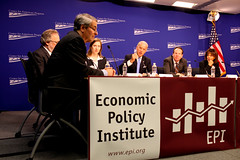
The best part of Ken Auletta’s long New Yorker profile of Jill Abramson, the first female executive editor of the New York Times, comes in the final paragraph:
To celebrate her return to the city, in 2003, Abramson got a small tattoo on her right shoulder that replicates an old subway token. It was intended, she says, as a tribute to the subway system, which she rides and which she associates with her home town, and as a declaration that she had “come back to New York, likely for good.” The slogan on the coin, she said, was also meant as a reflection of her philosophy that life is not a dress rehearsal for anything: “Good for one fare.”
Unfortunately, the rest of the profile is an extended rumination on whether Abramson is a bitch. Auletta is obsessed with this question. The piece is a littany of people Jill Abramson did or didn’t fight with over the course of her distinguished career. Steven Brill: only that one time; Howell Raines: oh, yes; Bill Keller: no; Dean Baquet: no.
In the very first paragraph we’re told that Abramson was “nervous” on her first day as executive editor because “many in the newsroom feared her.” Auletta takes it for granted that this is a bad thing.
In fairness, Abramson seems determined to cast herself as a repentant overbearing boss determined to mend her ways. The piece hints that this might be a strategic decision. We’re given the strong impression that Howell Raines’ imperious personality shortened his tenure as executive editor and that Abramson knows it.
Oddly, for a piece that’s explicitly about gender and power, Auletta gives scant consideration to the possibility that Abramson is being judged unfairly because she’s an assertive woman. He sets the stage by rattling off some anecdotes and statistics about the Times’ male-dominated history, but that’s about it.
The piece weighs two theories of Abramson’s psychology: incorrigible bitch and unintentional bitch capable of reform. An anonymous senior editor is quoted as saying, “Unlike Howell, she is not mean. Jill is a nice, caring person. … She doesn’t enjoy torturing people. So much of her negativity is unintended.” Abramson remarks that her children often perceived her as yelling at them, even when she wasn’t.
Auletta remarks on Abramson’s “schoolteacherlike” manner of speech and her “cackle of a laugh.” He gets a lot of people to say that Abramson was mean at meetings, but he doesn’t get around to describing what she actually said. “Abramson interrupted, without allowing them to finish the presentation, and began belittling many of their ideas,” he writes in one representative passage, adding that “even her supporters were mildly critical of her behavior” that day.
Auletta portrays Abramson’s decision to write a dog training memoir, “The Puppy Diaries: Raising a Dog Named Scout,” as an unfathomable feminine quirk, one that Abramson herself is somewhat self-conscious about. “Say what you will about the grayer days of the Times in mid-century, but it was always hard to imagine James Reston writing a book about a beloved household pet,” he writes. It doesn’t seem to occur to him writing a book about nurturing a puppy might be a strategy to soften her image.
The piece is so focused on Abramson’s interpersonal style that it glosses over much more interesting and substantial themes, themes that Auletta identifies as important and then abandons to go back to talking about Abramson’s voice. Auletta reports that Arthur Sulzberger hired Abramson for the top job in large part because he wanted an editor who understood “the move from search to social and what that means for us.” According to Sulzberger, “Increasingly, people are learning where they want to go, what they want to consume, how they want to engage with news or games or a variety of different things from each other.” Yet, Auletta barely touches on Abramson’s new media strategy.
We’re told that Abramson’s background as an investigative reporter has informed her approach to editing the paper. She wants the paper to “get to the bottom of things” whereas Bill Keller, a former foreign correspondent, was more interested in “explaining things” (meaning, roughly, describing events as they unfolded). That’s pretty much all we learn about a purportedly profound philosophical shift at the national newspaper of record.
Imagine you’re pitching a magazine profile. Your angle is that the executive editor of the New York Times can be brusque, abrupt, and intimidating. That’s a dog bites man story, unless of course the executive editor is a woman.
[Photo credit: “Abramson to Replace Keller as The Times’s Executive Editor,” John Niedermeyer, Creative Commons.]










